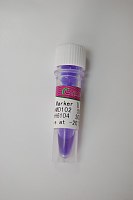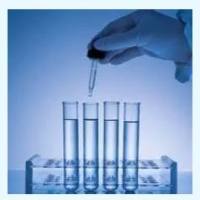DNA-Unwinding Test Using Eukaryotic DNA Topoisomerase I
互联网
1156
The DNA unwinding effect of a drug, derived from either DNA intercalation or groove binding, represents a warning signal for its possible link to side effects or toxicity. DNA unwinding results in a lengthening of the double helix. This increase in length can be detected by physicochemical (such as electric dichroism) or hydrodynamic methods (such as viscosity and sedimentation measurements) using short segments of linear DNA. These methods mostly are labor-intensive or lack sensitivity. Alternatively, the DNA-unwinding effect of a drug can be tested utilizing basic DNA topology manipulations conducted by DNA-modifying enzymes (1 ). The assay uses an endonuclease-linearized plasmid DNA, which is then rejoined by the action of DNA ligase in the presence of a unwinding drug that causes a decrease in DNA total twist (the number of total base pairs divided by the number of base pairs making a complete double-helical turn). The end result of such a nicking-rejoining process in the presence of a DNA-unwinding agent is the formation of a relaxed underwound DNA molecule with a deficient linking number (the number of times one strand goes around the other in a duplex ring). The relaxed underwound DNA converts to supercoiled DNA on removal of the drug owing to the recovery of normal DNA twist, and this supercoiled DNA formation is thus an indication of the unwinding effect. To be described in this chapter is a simplified version of this method for determining the effect of DNA unwinding using eukaryotic topo I, which possesses both endonuclease and ligase functions, and does not require magnesium ions for activities. The usefulness of this method has been demonstrated with many DNA binding agents, including the antibacterial quinolones (2 ,3 ) and antitumor quinobenoxazines (4 ).





